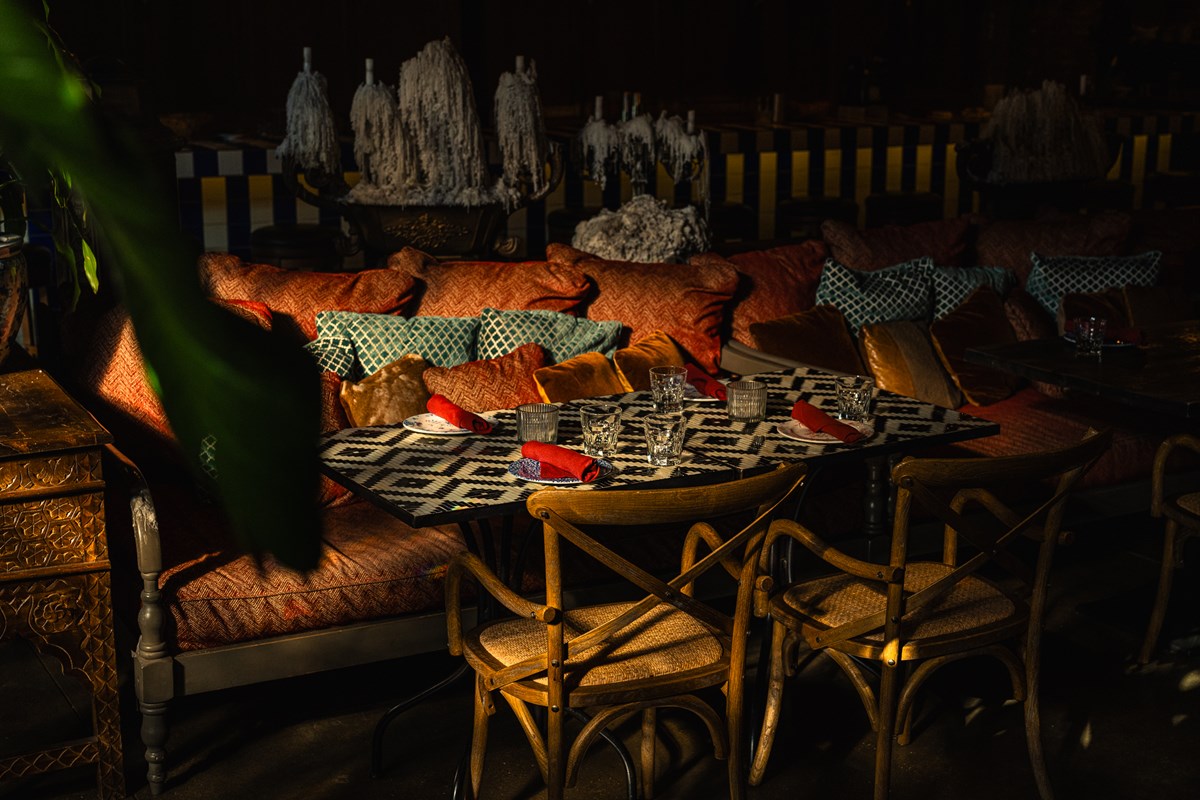An Exotic Neighborhood Escape with globetrotting cuisine, tropical cocktails, bohemian interiors and a great place to watch sports in Chicago’s West Town.
Named after the bohemian freethinkers of the 1950s and ’60s, Beatnik West Town channels the beatnik generation’s sense of style, aspiration and rebellion to create an exotic escape with maximalist interiors and lush gardens.
Mirroring our design-through-storytelling whimsy, Beatnik’s culinary team takes guests on a globetrotting journey that starts in the Eastern Mediterranean, moves westward across Northern Africa and finishes across the Atlantic with the flavors of Mexico.
Beatnik’s beverage team makes tropical cocktails that are savory and fresh, with inventive recipes that follow a no-waste sensibility. Our wine list is a compact attaché that contains the story of winemakers who make wine in lesser-known regions of the Mediterranean and the Americas.
Beatnik’s aesthetic is driven by a triumphant fusion of three destinations close to our heart: Morocco for its opulent combinations of color and artistic passion, the Mediterranean countryside for its bucolic splendor and Italy for a healthy dose of polish and panache to sex it all up.
Concepted and designed by Maison Bonhomme, the contrasting styles and textures of Beatnik West Town feature antique pieces from around the world and more than 400 living plants throughout the 6,000-square-foot, 200-seat space. Expanding on the definition of what a Chicago restaurant should and could look like, our vast collection of exceptional antiques was carefully curated over two years, and when coupled with custom-designed pieces, push the boundaries of maximalist restaurant design in Chicago.
Some of the more remarkable pieces in our collection include:
__ An enormous, 40-foot-wide by 10-foot-tall, Carved Teak Façade was imported from Bali, where it had been the façade of a grand home, to be a centerpiece of the dining room // circa 1900
__ 15 Massive Crystal Chandeliers were salvaged from the Ballroom of the Historic, Yamasaki-designed century Plaza Hotel in Los Angeles and today hang throughout the courtyard and dining room, generously adding history and glamour to the space // 1966
__ Glazed terra cotta tiles were used throughout the Andalusian-inspired courtyard to design and fabricate the bar and several spectacular custom planters
__ Monumental 30-foot-wide by 13-foot-tall Pine Cabinets from the Terme di Salsomaggiore were used as both decorative elements and as the principal storage spaces for the bar team // Parma, Italy // circa 1930
__ Newspaper Letter Press Printers Trays were used to create texture by cladding one of the bars and framing the open kitchen // circa 1900
__ Custom Wall Coverings and Floor Mural by local artist Erik DeBat inspired by the Prints & Garments created by Fashion Icon Emilio Pucci // Chicago // 2017
__ Wrought Iron Wellhead from an Olive Grove in Malaga, Spain owned by an American who worked for the Secretary of State in the early part of the 20th century // 18th century
__ Shop Counter from the Oldest General Store in Illinois // Woodstock, IL // circa 1900
__ “Caramelera” Candy Display from a Sweets Shoppe // Argentina // circa 1920
__ Carved Wood Doors from a Home in Egypt // circa 1900

